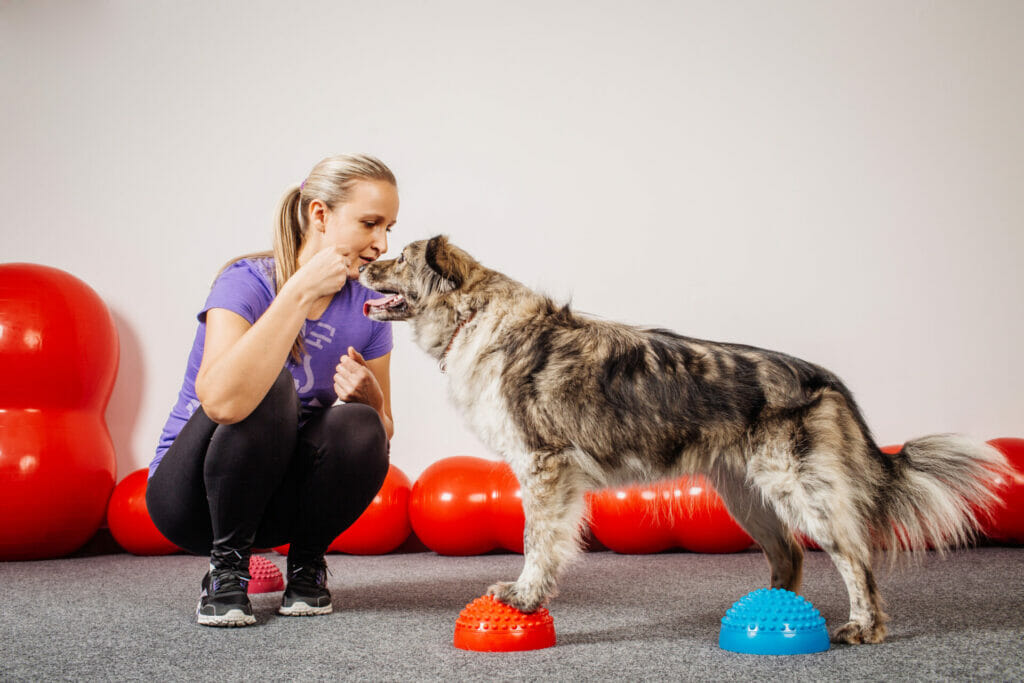If you’re training your dog, it can feel overwhelming with the many different opinions and perspectives on how to approach training. It’s important to note that in the United States, there are no minimum training requirements or education requirements for dog trainers. Anyone can call themself a dog trainer regardless of how much or how little knowledge they have about canine behavior and working with dogs. So just because someone claims they can fix your dog, or their methodology is best, doesn’t mean it’s rooted in the current science of dog training. At this point, dog training can mostly be grouped into two categories Positive Reinforcement or Balanced Training. Within these two broader categories are different training tools and approaches.

Positive reinforcement/ LIMA:
Positive Reinforcement dog training is rooted in the principles of LIMA or Least Intrusive, Minimally Aversive. Positive reinforcement dog training is a science-based form of dog training that focuses on setting dogs up for success and teaching dogs through rewards. Behaviors that are rewarded with food, toys, play, and praise are more likely to be repeated. Therefore, we can shift a dog’s behavior by rewarding the behaviors we want. Positive reinforcement training doesn’t just look at a specific behavior; instead, it approaches training more holistically to assess what a dog might be feeling, which is leading to the behavior, and then how to shift those feelings to eliminate unwanted or dangerous behavior. Clicker Training or utilizing a clicker and an auditory marker to cue your dog that they have done a specific behavior you like is one modality of positive reinforcement training.
Balanced training
Training that utilizes punishments and punitive approaches is commonly referred to as balanced training. This training methodology may incorporate some aspects of positive reinforcement but is also rooted in the idea that dogs need to be corrected or punished for undesirable behaviors. Balanced training involves using tools like prong collars, shock/e-collars which are designed to cause discomfort and pain to dogs to make doing a specific behavior so uncomfortable they will refrain from doing it. Balanced training can also include other outdated training approaches, such as dominance training, alpha rolls, etc., which are harmful to dogs, and harm the relationship between dogs and their people.
Why are they different:
Positive Reinforcement is about assessing the root of what is going on. It’s about helping to shift a dog’s feelings and responses to a situation or triggers. Balanced training relies on punishment and punitive response, suppressing a dog’s natural behaviors and responses but doesn’t change how a dog feels about something. Training that utilizes aversive and punitive methods can appear to solve behavior issues quickly; however, there is usually a fall-out from this that occurs over time. This means that in order avoid experiencing pain or discomfort, the dog suppresses how they feel about a trigger, but over time the unwanted behavior– that is often rooted in fear or insecurity– is likely to return. When that suppressed behavior resumes, it’s often “worse” or more exaggerated than before. For example, if you use aversive techniques to suppress a dog who is uncomfortable when approached by strangers, that dog may ultimately progress to trying to bite people. On the other hand, positive reinforcement works to understand what the dog might find uncomfortable about people and works at a level the dog feels comfortable to shift the dog’s feelings about the sight of people, and incrementally increase the dog’s comfort with the presence of people closer.
What Science Says:
Positive reinforcement training has consistently been shown to be most effective for changing behavior and is endorsed by the American Veterinary Medical Association, as well as the American Veterinary Society of Animal Behavior, as the best way to work with dogs. The Certification Council for Professional Dog Trainers also requires trainers who become certified to utilize only LIMA (Least Intrusive, Minimally Aversive) approaches to training. Humans and dogs have shared our lives together for thousands of years. During this time, a lot has changed about how we live with dogs, from what we feed them, how we live together, and how we train them. Although aversive and punitive training approaches used to be the norm for training dogs, in recent years, that has changed. Just like a few decades ago, corporal punishment of children was normal, now we know that spanking and other forms of physical punishment aren’t the right way to teach children. The same is increasingly being understood when it comes to dogs. Dogs, regardless of size and breed, don’t need to be shown “who is boss” or taken control of. Instead, by using positive reinforcement approaches to training, we can increase our dog’s confidence and help shift our dog’s responses to situations they were previously triggered by, and gently teach our dogs new ways to interact with the world around them.




















